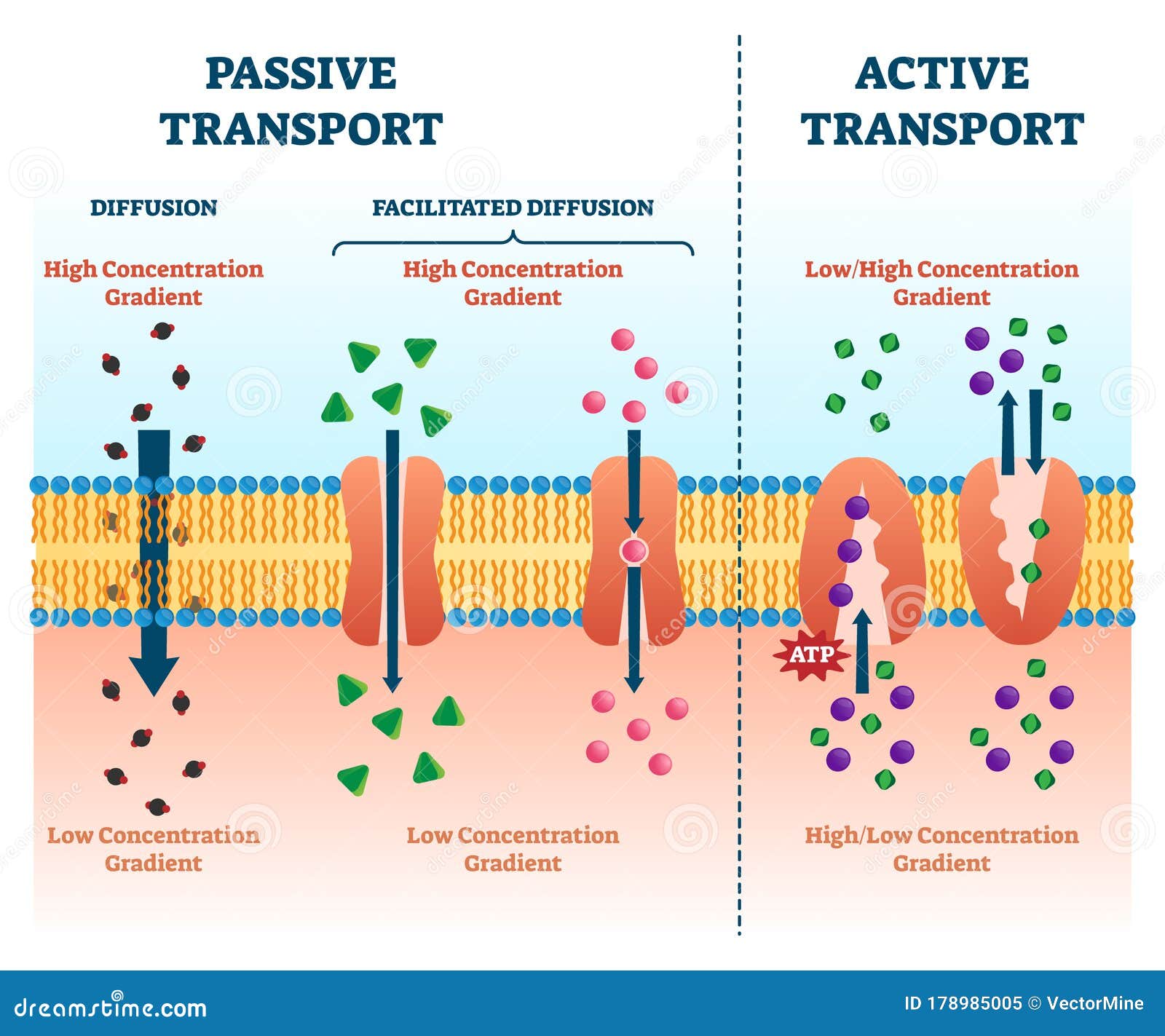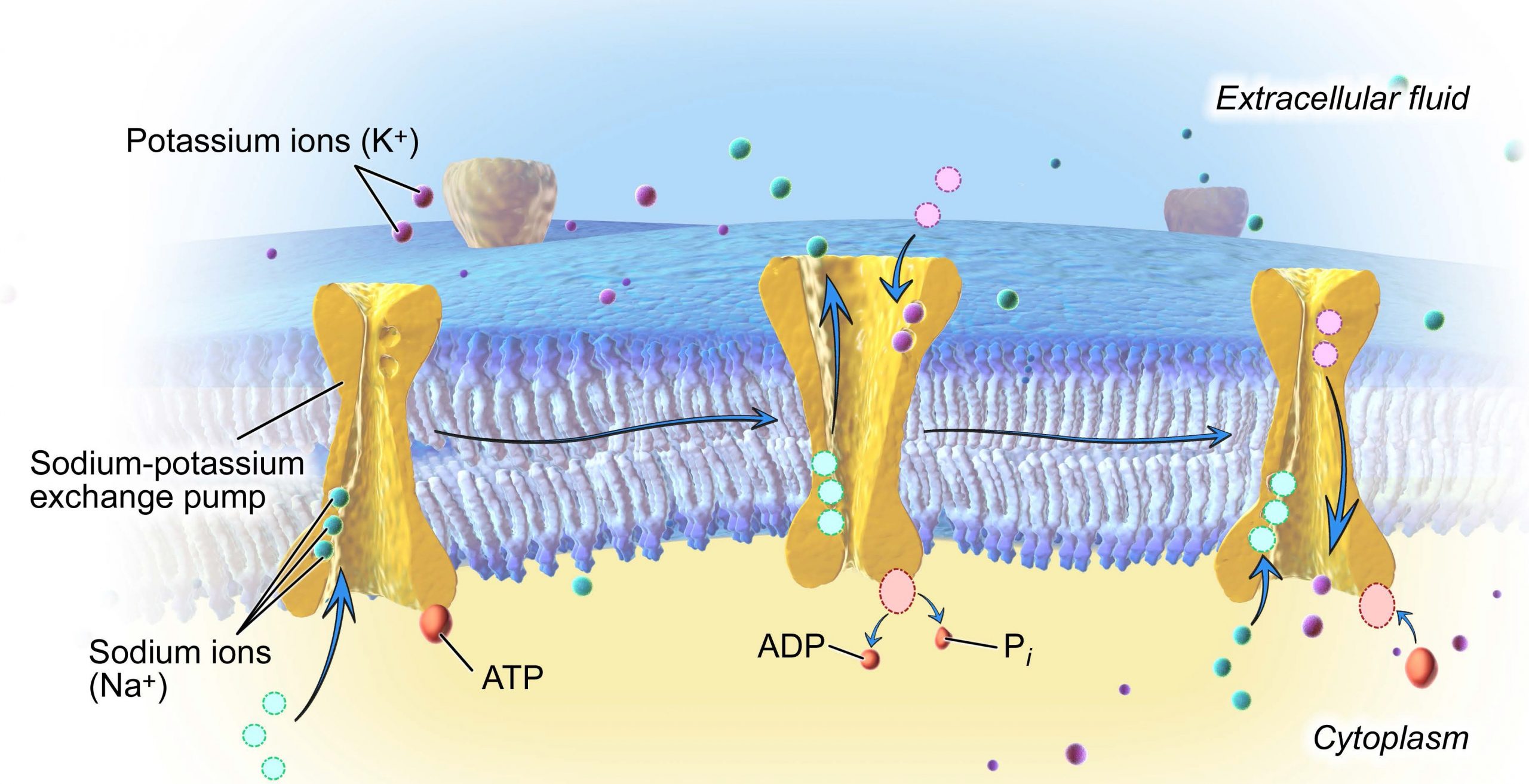Active Transport Drawing
Active Transport Drawing - Some substances can pass into or out of a cell across the plasma membrane without any energy required because they are moving from an area of higher concentration to an area of lower concentration. Web type of active transport. Web active and passive transport are biological processes that move oxygen, water and nutrients into cells and remove waste products. Web active transport mechanisms, collectively called pumps or carrier proteins, work against electrochemical gradients. Web a vital active transport process that occurs in the electron transport process in the membranes of both mitochondria and chloroplasts is the transport of protons to produce a proton gradient. The primary active transport system uses atp to move a substance, such as an ion, into the cell, and often at the same time, a second substance is moved out of the cell. Small substances constantly pass through plasma membranes. Web movement across a membrane and energy. Web primary active transport moves ions across a membrane and creates a difference in charge across that membrane. This proton gradient powers the. Web active transport requires energy to move substances against a concentration or electrical gradient, like a canoeist paddling upstream. Some substances can pass into or out of a cell across the plasma membrane without any energy required because they are moving from an area of higher concentration to an area of lower concentration. Web what is active transport? Here, we’ll look in more detail at gradients of molecules that exist across cell membranes, how they can help or hinder transport, and how active transport mechanisms allow molecules. Of major interest to us, however, is the energy source used to drive transport against a concentration gradient. For active transport to occur, a membrane receptor is required which recognizes the ligand to be transported. Web active and passive transport are biological processes that move oxygen, water and nutrients into cells and remove waste products. Up a concentration gradient, via specialised membrane proteins. Active transport mechanisms require the use of the cell’s energy, usually in the form of adenosine triphosphate (atp). This process is “active” because it requires the use of energy (usually in the form of atp). Passive transport, on the other hand, does not require energy as substances move along their gradient, similar to. This proton gradient powers the. Web active transport mechanisms, collectively called pumps or carrier proteins, work against electrochemical gradients. There are two major ways that molecules can be moved across a membrane, and the distinction has to do with whether or not. Web active transport mechanisms, collectively called pumps, work against electrochemical gradients. Web define and describe active transport. Active transport requires chemical energy because it is the movement of biochemicals from areas of lower concentration to areas of higher concentration. Active transport in plants to draw in water understanding that: Movement across the cell membrane from lower to higher concentration that. Therefore, active transport requires energy, which is provided by the breakdown of atp. Web define and describe active transport. In a plant cell , it takes place in the root cells by absorbing water and minerals. Web primary active transport moves ions across a membrane and creates a difference in charge across that membrane. The primary active transport system uses. The cell membrane folds around food or liquid and forms a small pouch. Web active transport mechanisms, collectively called pumps or carrier proteins, work against electrochemical gradients. There are two major ways that molecules can be moved across a membrane, and the distinction has to do with whether or not cell energy is used. Web define and describe active transport.. Denote that active transport is the movement of solutes against their electrochemical gradients. Web type of active transport. Active transport maintains concentrations of ions and other substances needed by living cells in the face of these passive movements. Web here we will learn about active transport, which helps maintain the ionic composition of the cell's internal environment. To begin, start. Movement across the cell membrane from lower to higher concentration that requires energy. Active transport in plants to draw in water understanding that: Some substances can pass into or out of a cell across the plasma membrane without any energy required because they are moving from an area of higher concentration to an area of lower concentration. Here, we’ll look. There are two major ways that molecules can be moved across a membrane, and the distinction has to do with whether or not cell energy is used. Web active transport mechanisms, collectively called pumps, work against electrochemical gradients. Therefore, active transport requires energy, which is provided by the breakdown of atp. Up a concentration gradient, via specialised membrane proteins. The. A cell may spend much of its metabolic energy supply maintaining these processes. Small substances constantly pass through plasma membranes. Web define and describe active transport. Web active transport is a mode of transportation in plants, which uses stored energy to move the particles against the concentration gradient. Web active transport maintains concentrations of ions and other substances that living. Active transport maintains concentrations of ions and other substances needed by living cells in the face of these passive changes. Movement across the cell membrane from lower to higher concentration that requires energy. Web during active transport, substances move against the concentration gradient, from an area of low concentration to an area of high concentration. Small substances constantly pass through. With the exception of ions, small substances constantly pass through plasma membranes. To begin, start a table to learn some key points about active transport. As this is against the concentration gradient, it cannot occur passively. Active transport maintains concentrations of ions and other substances needed by living cells in the face of these passive movements. This type of transport. Web here we will learn about active transport, which helps maintain the ionic composition of the cell's internal environment. Web primary active transport moves ions across a membrane and creates a difference in charge across that membrane. Here, we’ll look in more detail at gradients of molecules that exist across cell membranes, how they can help or hinder transport, and how active transport mechanisms allow molecules. The primary active transport system uses atp to move a substance, such as an ion, into the cell, and often at the same time, a second substance is moved out of the cell. Active transport maintains concentrations of ions and other substances needed by living cells in the face of these passive movements. This proton gradient powers the. Active transport requires chemical energy because it is the movement of biochemicals from areas of lower concentration to areas of higher concentration. Web active transport mechanisms, collectively called pumps, work against electrochemical gradients. With the exception of ions, small substances constantly pass through plasma membranes. Small substances constantly pass through plasma membranes. The cell membrane folds around food or liquid and forms a small pouch. Up a concentration gradient, via specialised membrane proteins. Web a vital active transport process that occurs in the electron transport process in the membranes of both mitochondria and chloroplasts is the transport of protons to produce a proton gradient. This process is “active” because it requires the use of energy (usually in the form of atp). Web this lesson plan includes the objectives and prerequisites of the lesson teaching students how to describe different examples of active transport processes that occur across the cell membrane. The primary active transport system uses atp to move a substance, such as an ion, into the cell, and often at the same time, a second substance is moved out of the cell.Active Transport Diagram
Active Transport Definition , Types & Examples
Active Transport Diagram Labeled
Active Transport in Plants to Draw in Water (2016) YouTube
Active transport Wikipedia
Active Transport Diagram
Chapter 8. Membrane Transport Introduction to Molecular and Cell Biology
Active Transport Diagram Labeled
Active Transport Drawing
Active Transport Diagram
Web Active Transport Is The Movement Of Molecules From An Area Of Lower Concentration To A Higher Concentration, I.e.
In A Plant Cell , It Takes Place In The Root Cells By Absorbing Water And Minerals.
Some Substances Can Pass Into Or Out Of A Cell Across The Plasma Membrane Without Any Energy Required Because They Are Moving From An Area Of Higher Concentration To An Area Of Lower Concentration.
Web Movement Across A Membrane And Energy.
Related Post:









